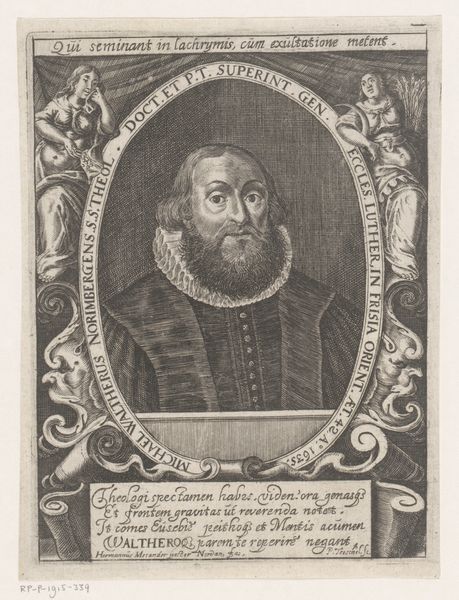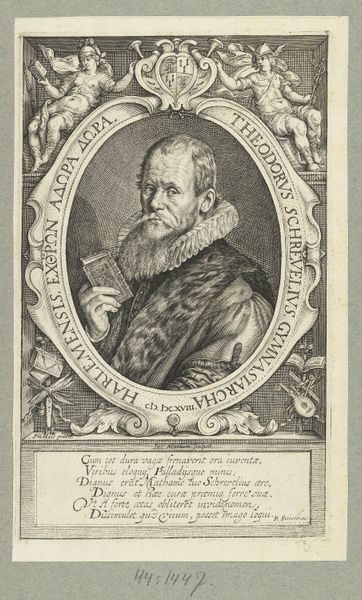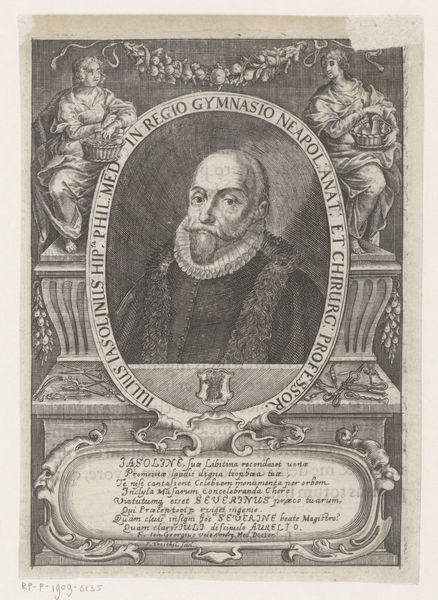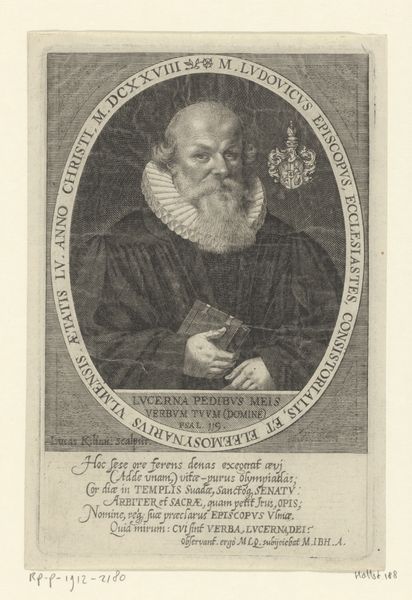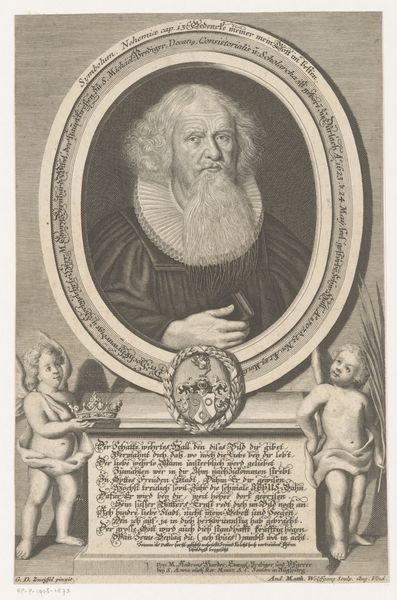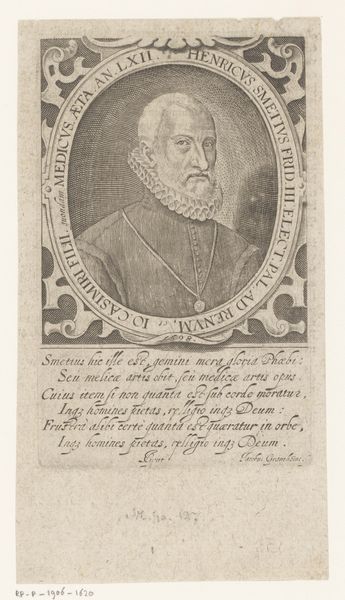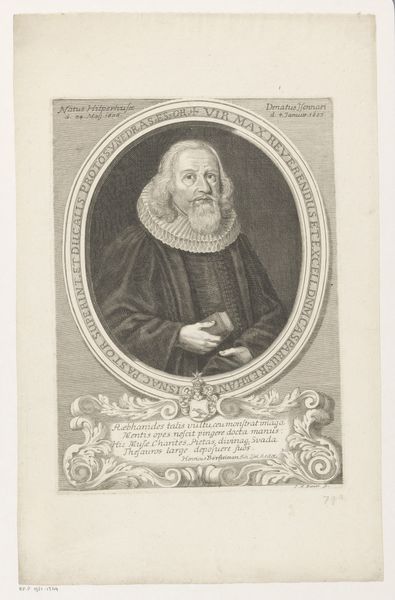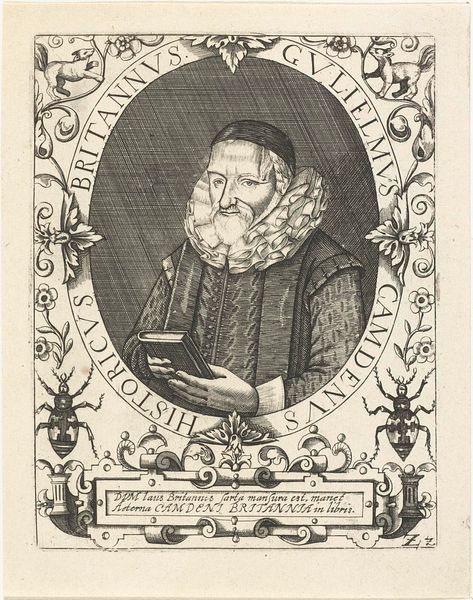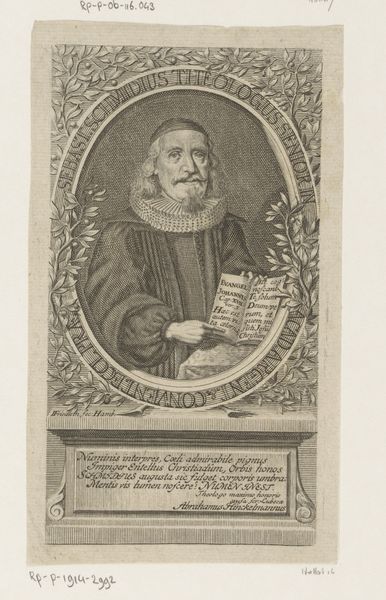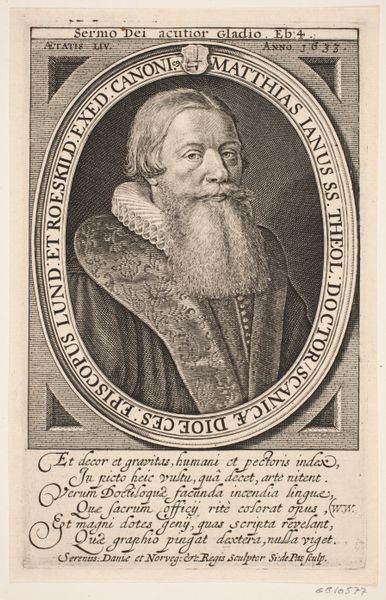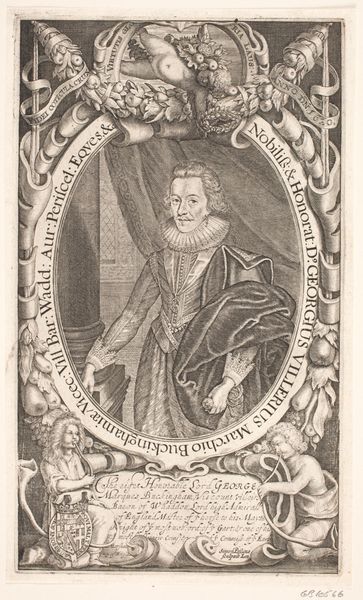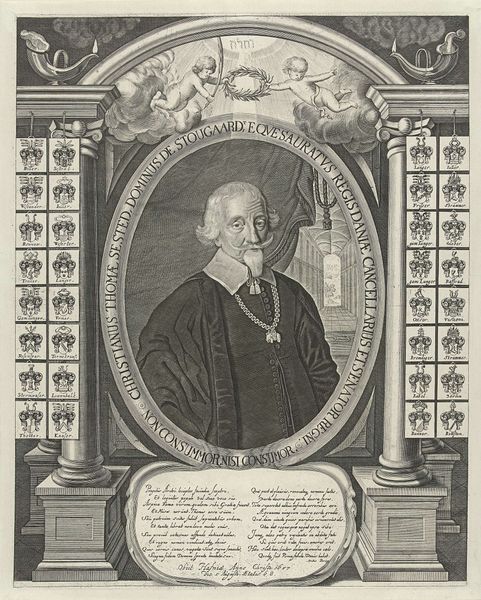
engraving
#
portrait
#
baroque
#
engraving
Dimensions: height 176 mm, width 125 mm
Copyright: Rijks Museum: Open Domain
Curator: Here we have Nicolaus Häublin’s engraving, "Portret van Stephan Pilarick," created sometime between 1678 and 1685. What are your initial impressions? Editor: I am struck by its somber tone. The tight framing and stark monochrome lend a seriousness to the subject, Stephan Pilarick. The ornate frame, paradoxically, only seems to amplify a sense of austerity. Curator: Indeed, the composition, divided into thirds, positions the portrait centrally within an oval frame, drawing the eye directly to Pilarick's face. The elaborate details in the corners – note the intricate symbols and textual elements – add visual complexity and textural variation. The use of light and shadow, though subtle, also shapes the contours of the face. Editor: Placing this within its socio-historical context, it's important to ask: who was Stephan Pilarick? Häublin commemorates a cleric; text names him as a pastor. The symbols—and his garments—suggest an individual navigating a society steeped in religious and intellectual debate, and baroque artwork frequently carries layers of ideological meaning related to power, patronage, and identity. Curator: Precisely. Look at the lettering inscribed in the frame. Text flanks the cleric, a symbolic testament to his virtues, but from a formal perspective it balances the symmetry and acts in relation to the various objects carefully placed. Editor: But we must also look beyond simple visual harmony. Consider the political dynamics: could the inscription hold hidden allusions to Pilarick's role within broader social struggles or religious reformations? Baroque art often functioned as propaganda. How did his portrait contribute to, or perhaps subtly challenge, prevailing narratives? Curator: A critical reading enhances our understanding, yet we shouldn't disregard the skill in Häublin's method. See how line and form operate together to establish figure and depth in the print? Editor: Agreed. And recognizing the intertwined relationship of art, patron, and society helps unveil more about this print, including the complexities behind even the seemingly simple portrait of a clergyman.
Comments
No comments
Be the first to comment and join the conversation on the ultimate creative platform.
